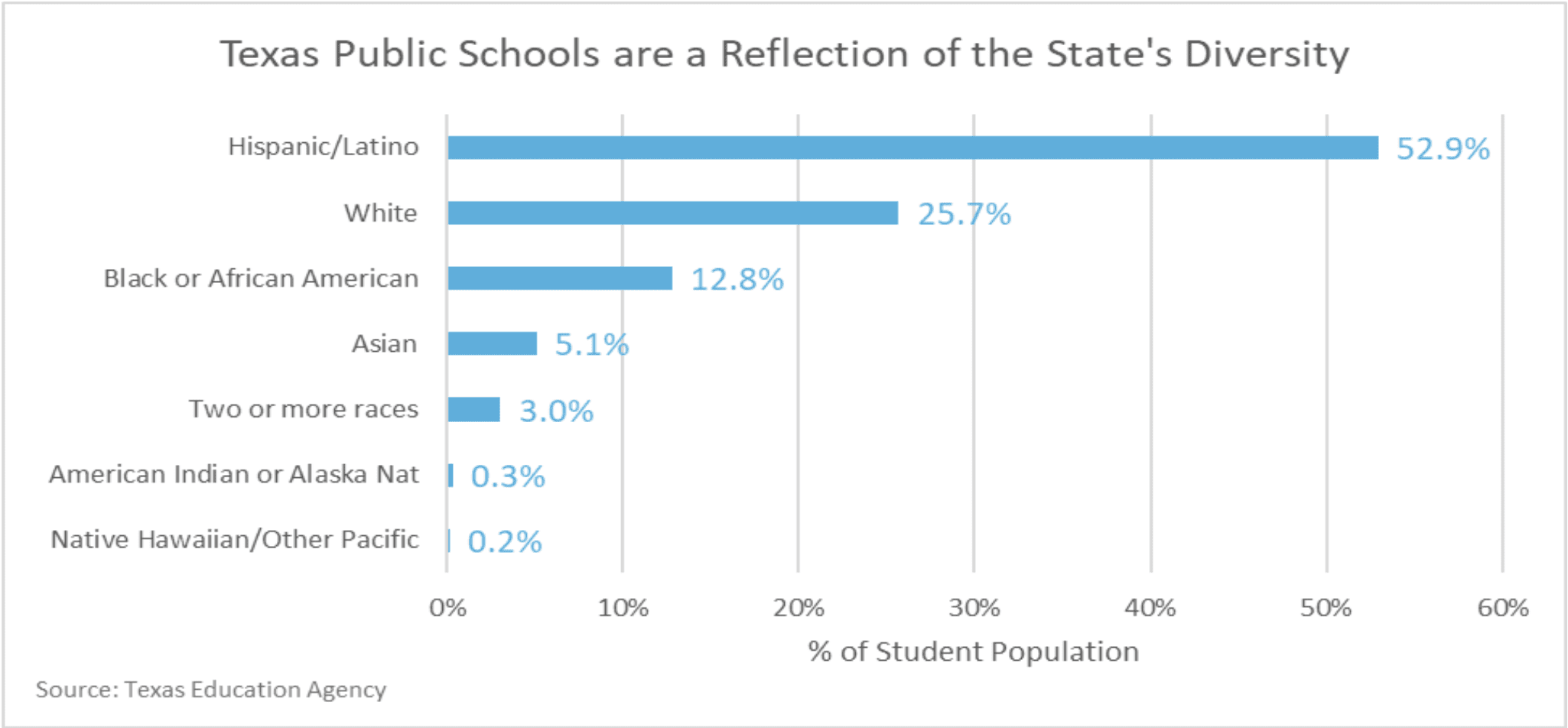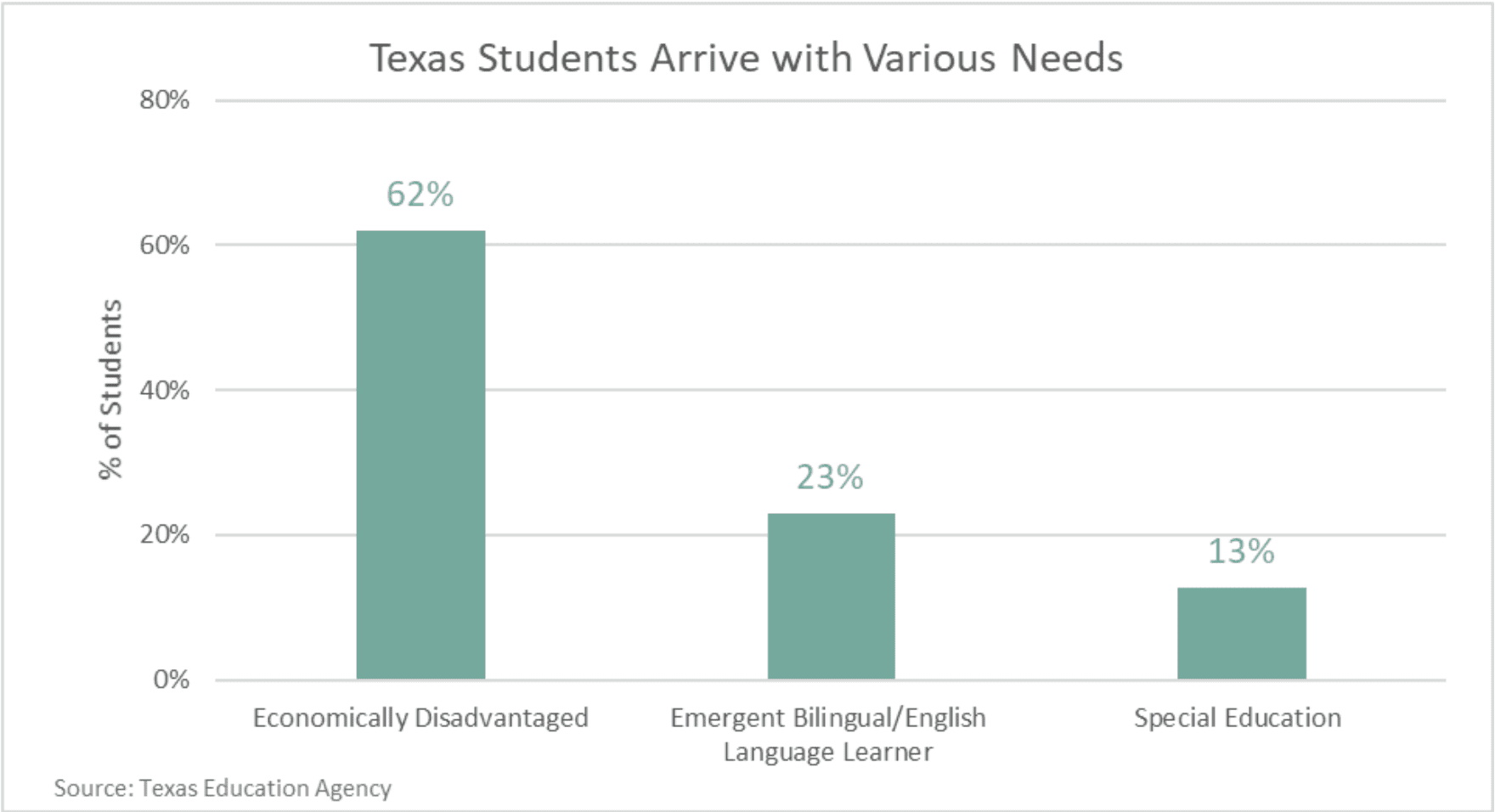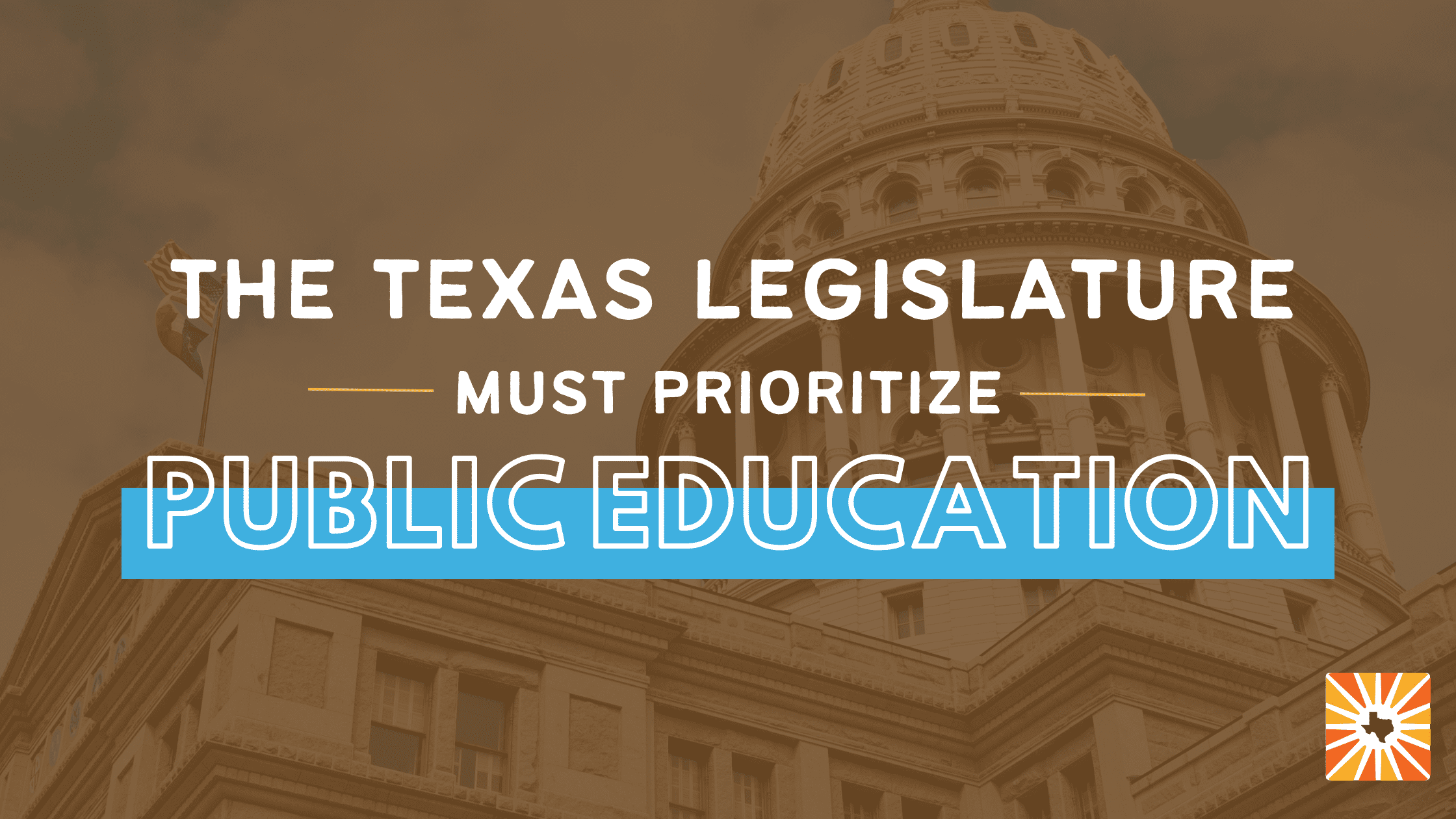All children in Texas have the right to quality public education; according to the Texas Constitution, our public education system must ensure all kids have access to an education that “enables them to achieve their potential and fully participate now and in the future in the social, economic, and educational opportunities of our state and nation.” To fulfill this requirement, the Constitution makes clear: “It shall be the duty of the Legislature of the State to establish and make suitable provision for the support and maintenance of an efficient system of public free schools.”
Texas is a large and diverse state. Within its 268,597 square miles, 5.5 million children rely on public education to reach their full potential. Currently, 53% of students are Hispanic/Latino, 26% are white, and 13% are Black. Our public schools are a direct reflection of the state’s diversity.

As with any state, our students arrive to the classroom with various needs: 62% are economically disadvantaged, 23% are emergent bilingual, and 13% receive special education services. Public schools must accept and respond to the needs of every student, therefore, it’s the responsibility of our state leaders to invest in special education, two-way bilingual educational programs, and enrichment programs – if they hope to hit Texas’ educational goals.

Texas made a promise to families – regardless of race, class, or circumstance – that it would fund a public education system capable of preparing our children for lifelong opportunities.
Many of our state leaders have failed to keep up their end of the deal.
The Legislature started writing the 2024-25 state budget with an unprecedented cash balance of $33 billion. Rather than increasing base level funding for schools with that surplus, The Legislature instead passed $18 billion in property tax cuts. While these cuts will increase the percentage of school funding coming from state resources, without sustained revenue the Legislature will be limited in its ability to make future investments. Nearly $4 billion was set aside for public education in the budget, but those dollars were never allocated. The school finance bill passed by the House died when the Senate added a voucher scheme to divert money from public education to private schools.
State leadership is holding education funding hostage over private school vouchers that would only serve a handful of students. In doing so, they are denying every Texas child the rights guaranteed to them by the state constitution.
When the Legislature returns for a third special session next week to debate education issues, lawmakers must prioritize public education by increasing funding for public schools. Private school vouchers are a separate issue and should not be considered alongside public education funding. The Legislature must meet its constitutional obligation to provide for the 5.5 million Texas children who rely on public schools. Our children are worth it and the future of our state depends on it.
The top three ways the Legislature can make meaningful investments in public education:
- Increase the basic allotment (base level per student funding);
- Adjust funding annually for inflation;
- Move to enrollment-based funding, so that every student is counted every day.
Texas ranks 42nd in the country when it comes to education opportunities and performance.
- Texas received an A- in equity, due to recapture and the state’s efforts to direct additional funding to populations with greater needs.
- However, Texas received an F in school spending because of its shamefully low funding amounts.5
- The national average for per-student public education spending is $13,679, compared to only $9,369 in Texas – more than $4,000 less per student.6
The current basic allotment – the base level per-student funding amount before any adjustments are made for district or student characteristics – is $6,160. It’s been the same since 2019. If adjusted for inflation every year, the basic allotment would hit $7,671 by 2025, though this level of investment would still fall short of the national average.

Public schools must serve all children, regardless of their needs, backgrounds, neighborhoods, or abilities. Every student deserves to attend a well-funded public school – they’re the heart of our communities. Beyond the basics of education, students learn to be stewards of democracy and to interact and connect with people different from themselves. When we invest in public schools, we invest in the future of our state.
